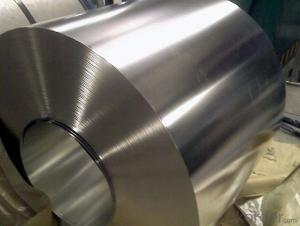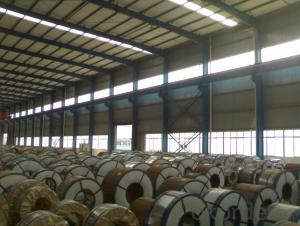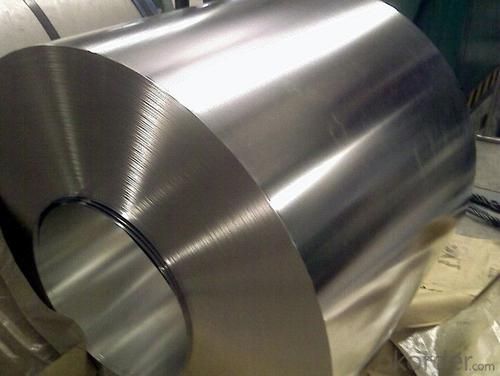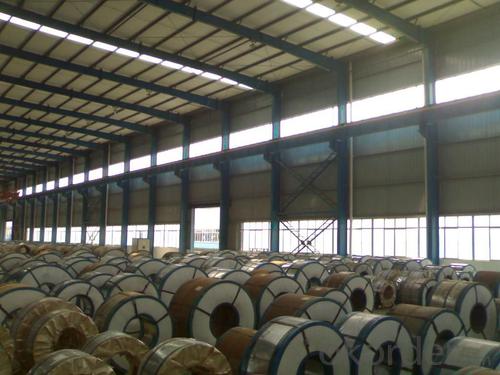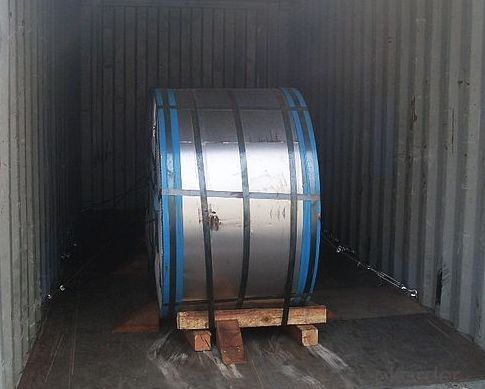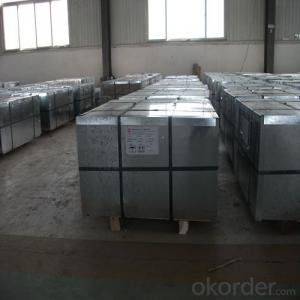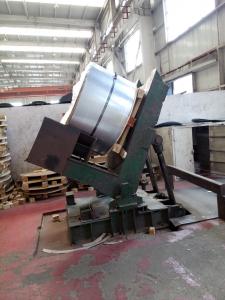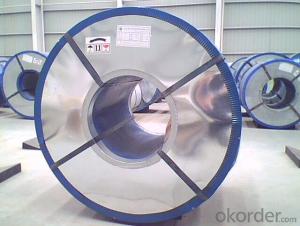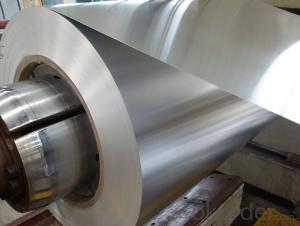Electrolytic Tinplate Coil for Food Cans Packing
- Loading Port:
- Tianjin
- Payment Terms:
- TT OR LC
- Min Order Qty:
- 25 m.t
- Supply Capability:
- 7000 m.t/month
OKorder Service Pledge
OKorder Financial Service
You Might Also Like
1.Structure of Electrolytic Tinplate Coil for Food Cans Packing Description
Electrolytic Tin Plate Coils and Sheets for Foods Metal Packaging, is one thin steel sheet with a coating of tin applied by electrolytic deposition. Tinplate made by this process is essentially a sandwich in which the central core is strip steel. This core is cleaned in a pickling solution and then fed through tanks containing electrolyte, where tin is deposited on both sides. As the strip passes between high-frequency electric induction coils, it is heated so that the tin coating melts and flows to form a lustrous coat.
2.Main Features of the Electrolytic Tinplate Coil for Food Cans Packing
Appearance – Electrolytic Tin Plate is characterized by its beautiful metallic luster. Products with various kinds of surface roughness are produced by selecting the surface finish of the substrate steel sheet.
Paintability and printability – Electrolytic Tin Plates have excellent paintability and printability. Printing is beautifully finished using various lacquers and inks.
Formability and strength – Electrolytic Tin Plates have got very good formability and strength. By selecting a proper temper grade, appropriate formability is obtained for different applications as well as the required strength after forming.
Corrosion resistance – Tinplate has got good corrosion resistance. By selecting a proper coating weight, appropriate corrosion resistance is obtained against container contents. Coated items should meet 24 hour 5 % salt spray requirement.
Solderability and weldability – Electrolytic Tin Plates can be joined both by soldering or welding. These properties of tinplate are used for making various types of cans.
Hygienic – Tin coating provides good and non toxic barrier properties to protect food products from impurities, bacteria, moisture, light and odours.
Safe – Tinplate being low weight and high strength makes food cans easy to ship and transport.
Eco friendly – Tinplate offers 100 % recyclability.
Tin is not good for low temperature applications since it changes structure and loses adhesion when exposed to temperatures below – 40 deg C.
3.Electrolytic Tinplate Coil for Food Cans Packing Images

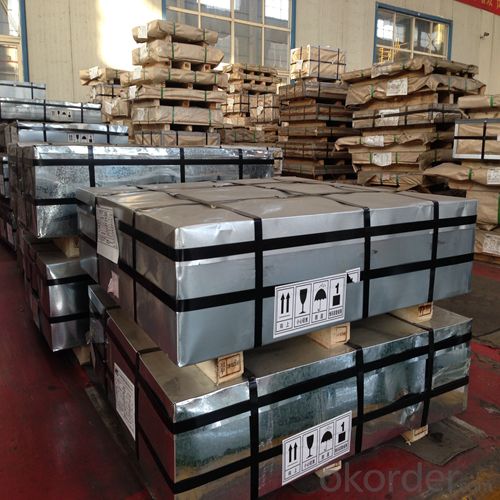
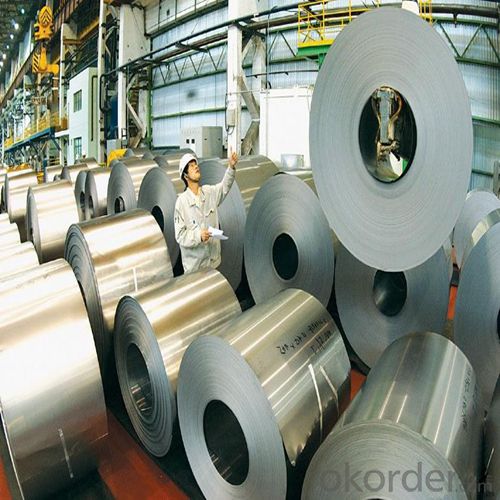
4.Electrolytic Tinplate Coil for Food Cans Packing Specification
Standard | ISO 11949 -1995, GB/T2520-2000,JIS G3303,ASTM A623, BS EN 10202
|
Material | MR,SPCC |
Thickness | 0.15mm - 0.50mm |
Width | 600mm -1150mm |
Temper | T1-T5 |
Annealing | BA & CA |
Coil Inner Diameter | 508mm |
Weight | 6-10 tons/coil 1~1.7 tons/sheets bundle |
Passivation | 311 |
Oil | DOS |
Surface | Finish,bright,stone,matte,silver |
5.FAQ of Electrolytic Tinplate Coil for Food Cans Packing
- How are the Electrolytic Tin Plates specified?
The Electrolytic Tin Plates are specified as per the steel base, extent of tempering, the coating weight, annealing method and the surface finish.
- How many types there are for base steels?
The base steels are of three types: Type MR, L, D
- Q: What kind of material is tinplate?
- Tin is mainly used to prevent corrosion and rust. It will be the steel strength and formability and corrosion resistance of tin soldering, and beautiful appearance with a material, corrosion resistant, non-toxic, high strength and good ductility properties
- Q: How is tinplate protected during transportation and storage?
- Tinplate is typically protected during transportation and storage through various measures such as applying a protective coating, using appropriate packaging materials, and implementing suitable handling and stacking procedures. The protective coating, often a thin layer of oil or lacquer, helps to prevent corrosion and maintain the integrity of the tinplate. Additionally, packaging materials like plastic wraps, paper interleaves, or cardboard dividers are used to separate and cushion the tinplate sheets, preventing scratches, dents, or other damages. Proper handling techniques, including careful loading and unloading, as well as appropriate stacking methods, ensure that the tinplate remains stable and secure during transportation and storage, reducing the likelihood of any physical harm.
- Q: What are the different printing techniques used on tinplate?
- Some of the different printing techniques used on tinplate include lithography, offset printing, screen printing, and digital printing.
- Q: How does tinplate contribute to the overall recyclability of packaging?
- Tinplate contributes to the overall recyclability of packaging as it is a highly recyclable material. It can be easily recovered and reused in the production of new packaging or other products. Its recyclability helps reduce the demand for new raw materials and minimizes the environmental impact of packaging waste.
- Q: How is tinplate used in the manufacturing of kitchenware?
- Tinplate is commonly used in the manufacturing of kitchenware due to its unique properties. It provides a protective coating that prevents corrosion and enhances the durability of the kitchenware items. Tinplate is often used to create food cans, utensils, and other cookware. Its ability to resist corrosion and maintain food quality makes it a popular choice for kitchenware manufacturers.
- Q: Can tinplate be used for bulk packaging?
- Yes, tinplate can be used for bulk packaging. Tinplate is a commonly used material for packaging due to its durability, strength, and resistance to corrosion. It is often used in the food and beverage industry to package products in large quantities efficiently and securely.
- Q: Raw material for zinc clad sheet? Can zinc clad plate replace tinplate?
- What is the meaning of zinc coated plate, is galvanized plate, galvanized sheet and tinplate is completely different, different materials, galvanized plate is carbon steel, tinplate is high-quality steel and tinplate is tin, zinc galvanized plate.
- Q: What are the main applications of tinplate in the beverage industry?
- Tinplate is mainly used in the beverage industry for the production of cans and packaging materials. It provides a protective barrier against corrosion, ensuring the product's integrity and extending its shelf life. Tinplate cans are lightweight, easily stackable, and offer convenient storage and transportation. Additionally, tinplate's ability to be printed and decorated makes it ideal for branding and marketing purposes in the beverage industry.
- Q: How does tinplate maintain its shape during the manufacturing process?
- Tinplate maintains its shape during the manufacturing process due to its inherent strength and rigidity, which is achieved through a combination of factors. Firstly, the steel substrate used in tinplate is typically made from low-carbon steel, which provides a sturdy foundation. Additionally, the tin coating on the steel provides an added layer of protection and stability. The tin layer acts as a barrier against corrosion and helps to prevent deformation or warping of the tinplate. Moreover, the manufacturing process involves carefully controlling the temperature and pressure, ensuring that the tinplate retains its shape and structural integrity.
- Q: How is tinplate coated on both sides?
- Tinplate is coated on both sides through a process called electrolytic tinning. In this process, the tinplate is immersed in an electrolyte solution while an electric current is passed through it. This causes tin ions to be deposited on both sides of the tinplate, resulting in a thin layer of tin coating.
Send your message to us
Electrolytic Tinplate Coil for Food Cans Packing
- Loading Port:
- Tianjin
- Payment Terms:
- TT OR LC
- Min Order Qty:
- 25 m.t
- Supply Capability:
- 7000 m.t/month
OKorder Service Pledge
OKorder Financial Service
Similar products
Hot products
Hot Searches
Related keywords

